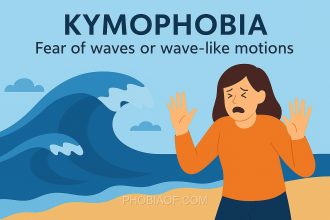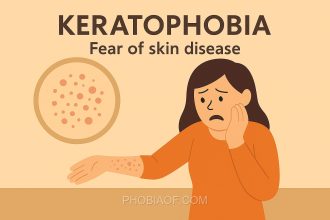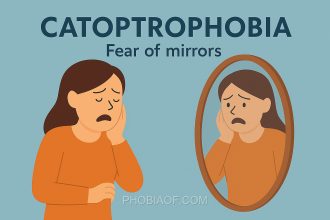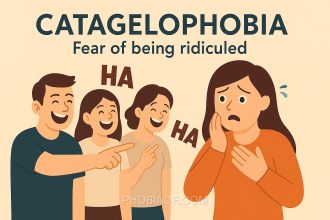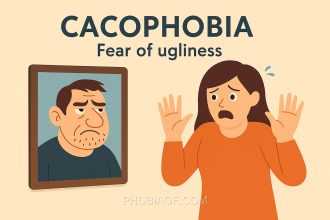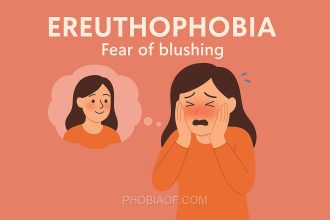Have you ever felt uneasy stepping outside on a sunny day? For some, this is more than just a preference for cloudy weather—it’s a condition known as Heliophobia, or the fear of sunlight.
Heliophobia comes from the Greek words “helio,” meaning sun, and “phobia,” meaning fear. It’s an intense, sometimes overwhelming fear of direct sunlight. While many people enjoy the warmth and brightness of a sunny day, individuals with heliophobia might experience anxiety, panic, or distress at the thought of exposure to sunlight.
This fear can significantly impact daily life. People with heliophobia might:
- Avoid going outdoors during daylight hours.
- Experience anxiety when sunlight enters their home.
- Feel socially isolated due to their need to stay indoors.
The consequences are not just emotional; they can also be physical. Avoiding sunlight can lead to vitamin D deficiency, which is crucial for bone health and immune function. Understanding heliophobia is essential to offer compassion and support to those affected, helping them find strategies to manage their fears and lead healthier, more fulfilling lives.
Causes of Heliophobia
Heliophobia, the fear of sunlight, can be a complex condition with multiple potential causes. Understanding these causes can help in addressing the fear effectively. Here we discuss some of the common reasons why someone might develop heliophobia.
- Genetic Predisposition:
Some individuals may have a genetic tendency towards anxiety disorders, which can include specific phobias like heliophobia. If family members have similar fears, it may increase the likelihood of developing this phobia.
- Traumatic Experiences:
Experiencing a traumatic event related to sunlight, such as severe sunburn or heatstroke, can lead to an intense fear of sunlight. The mind may associate the sun with danger, triggering a phobic response.
- Learned Behavior from Others:
Observing others who are afraid of sunlight can influence someone to develop similar fears. If a parent or close figure expresses fear or caution about the sun, it can be internalized by children or impressionable individuals.
- Psychological and Environmental Factors:
Heliophobia can also be linked to broader psychological issues such as depression or anxiety disorders. Environmental factors, such as living in regions with intense sunlight, might exacerbate existing fears or anxieties.
Interestingly, some theories suggest that heliophobia might be indirectly supported by societal trends, such as the emphasis on skincare and the dangers of UV exposure. These messages can unintentionally heighten fear about sunlight exposure, contributing to the development or intensification of heliophobia.
Overall, the origins of heliophobia are multifaceted, involving a combination of genetic, psychological, and environmental factors. Recognizing these causes can be the first step towards effective treatment and management of this fear.
Symptoms of Heliophobia
Heliophobia, the fear of sunlight, can lead to intense fear or anxiety when an individual is exposed to sunlight or even thinks about being in the sun. This phobia can manifest in various symptoms that may affect both the body and the mind. Recognizing these symptoms can be a crucial step in seeking help and understanding one’s experiences.
- Intense Fear or Anxiety: A person with heliophobia may experience overwhelming fear or anxiety when exposed to sunlight, often feeling a strong need to escape or avoid the situation.
- Panic Attacks: Sudden episodes of intense fear that may include symptoms such as heart palpitations, trembling, or a feeling of losing control.
- Sweating: Excessive sweating even in non-heat-inducing situations when thinking about or exposed to the sun.
- Rapid Heartbeat: An increased heart rate when faced with sunlight, or the anticipation of exposure.
- Shortness of Breath: Difficulty breathing or a feeling of being unable to catch one’s breath when in sunlight.
- Avoidance of Triggers: Avoiding situations where there might be exposure to sunlight, such as outdoor activities or even leaving the house during the day.
- Overwhelming Dread: A constant, nagging fear of sunlight that can dominate thoughts and lead to heightened anxiety levels.
- Physical Discomfort: Experiencing nausea, dizziness, or headaches when thinking about or being in the sunlight.
If the phobia is severe, these symptoms can significantly interfere with daily life, making it challenging to perform everyday activities, maintain social relationships, or pursue work and hobbies.
Treatment for Fear of Sunlight
Overcoming heliophobia, the fear of sunlight, is not only possible but achievable with the right approach. This phobia can be effectively managed and treated over time, allowing individuals to lead fulfilling lives. Below are various treatment options and coping strategies that have been proven to help individuals confront and conquer their fear of sunlight.
Proven Therapies
- Exposure Therapy: This therapy involves gradually facing the fear in a controlled and safe environment. By slowly increasing exposure to sunlight, individuals can desensitize their fear response. This method helps reduce anxiety over time and allows for a more natural adjustment to sunlight exposure.
- Cognitive-Behavioral Therapy (CBT): CBT is designed to change the fearful thoughts associated with sunlight exposure. Through this therapy, individuals learn to recognize and alter negative thought patterns, replacing them with positive, realistic thoughts that reduce fear and anxiety.
- Counseling: Working with a mental health professional provides a supportive space to explore the underlying causes of heliophobia. Counseling can help individuals develop coping strategies and emotional resilience.
Self-Help Coping Techniques
- Relaxation Exercises: Techniques such as deep breathing, progressive muscle relaxation, or guided imagery can help reduce anxiety and promote a sense of calm when facing sunlight.
- Meditation: Regular meditation practice can help manage stress and anxiety by promoting mindfulness and relaxation, which can be beneficial when dealing with heliophobia.
- Support Groups: Connecting with others who experience similar fears can provide encouragement and share effective coping mechanisms. Support groups offer a sense of community and understanding.
In some severe cases, medication such as anti-anxiety medications may be prescribed by a healthcare professional to help manage symptoms. However, the focus should remain on therapeutic approaches and developing robust coping skills.
Remember, seeking professional help is a positive step if heliophobia is interfering with your life. A mental health expert can provide personalized guidance and support to help you overcome this challenge. With the right treatment and strategies, you can manage and eventually conquer your fear of sunlight.
Conclusion
Understanding the causes and symptoms of heliophobia can be a powerful first step in addressing this often debilitating fear of sunlight. By gaining insight into what triggers this phobia and how it manifests, individuals can feel more empowered to take control of their experiences.
It is important to remember that you are not alone in facing this challenge. Many people have successfully managed or even overcome their phobias with time, patience, and the right support. If you or someone you know is struggling with heliophobia, consider reaching out to a mental health professional or a doctor. Therapy and professional guidance can offer invaluable tools and strategies for coping with this fear.
On a hopeful note, progress is not only possible but probable with dedication and the appropriate resources. Embrace the journey towards a more comfortable relationship with sunlight, and remember that seeking help is a courageous step towards a brighter, sunnier future.

